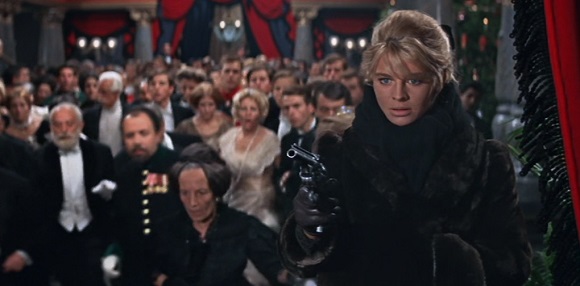Over the years there have been many magazines with a focus on Hollywood and the movies. One such was the Screenland magazine, which was established in Los Angeles, California, and published between September 1920 and June 1971.
In 1923 the magazine reported a love affair between Evelyn Brent and Douglas Fairbanks, resulting in legal threats, and a retraction.
The little lady on the front cover is clutching a Decree of Divorce.
________________________________________________________________________
In 1921, the process whereby enthusiastic amateurs submitted screenplay ideas for movies was already well established. If you were a subscriber to Screenland magazine, you could submit your story idea to "The Scenario Editor" and receive a "detailed criticism" on the What's the Matter with My Story? page.
Here are a couple of examples of the feedback provided.
This assessment—Yours is the hardest manuscript to read that we have ever seen—was published in 1921. The film Her Accidental Husband was released two years later by Belasco Productions. I don't know what happened to the script during that transition, but I think the moral of the story is, Never Give Up!
________________________________________________________________________
Mildred Harris (1901–1944) was a harem girl in D. W. Griffith's film Intolerance (1916). She appeared as a leading lady through the 1920s, but her career slowed with the coming of sound.
The sixteen-year old Harris met actor Charlie Chaplin in mid-1918. They married in October 1918. She conned Chaplin into marrying her by falsely claiming she was pregnant. And she later took him to the cleaners in a lucrative divorce settlement. During their brief marriage she did become pregnant but that baby died at birth. During the divorce that followed this loss, Louis B. Mayer attempted to exploit Chaplin’s domestic difficulties by trying to sign Mildred Harris to a film contract, billing her as "Mrs. Charlie Chaplin." L.B. and Charlie actually squared off and got into a brief fist fight (with Mayer landing a sucker punch).
Harris filed for divorce on the basis of mental cruelty in 1920. Chaplin accused her of infidelity, and, though he would not name her lover publicly, Alla Nazimova was suspected. Divorce was granted in November 1920 with Harris receiving $100,000 in settlement and some community property.
The following spread appeared in Screenland magazine two years later, and is headed by the question: Who Said Mildred Harris Can't Act? The subtext says:
This group of remarkable character studies was especially posed by the Paramount actress for the fourth installment of Screenland's Principles of Pantomine.
Silent era acting was summed up by Gloria Swanson in Sunset Boulevard (1950):
Still wonderful, isn't it? And no dialogue. We didn't need dialogue. We had faces.
The first photo is normal. The other faces being portrayed are labelled:
Contempt (top right), Dejection (centre), Fear (bottom left), and Revolt (bottom right).
________________________________________________________________________
Back issues of this magazine, from 1920 to 1922, are available online, courtesy of the Media History Digital Library at the University of Wisconsin-Madison.

















































